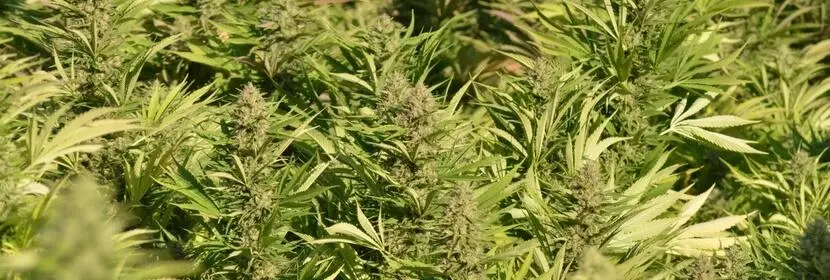If you are a Paradise Seeds fan then you will know that we spend a lot of time talking about the quality of our genetics. This is for the very good reason that the majority of our breeding takes place in-house through an extensive program of R+D with the result that new strains will display a common stability and uniformity. However, even the most stable strain can display different cannabis phenotypes and this article will delve a little deeper into this term.
A distinctive strain is referred to as a genotype, and if we rewind the history of cannabis, the many strains we can choose from today can trace their genetic lines back to a handful of landraces which displayed very typical genetic traits. For example the extremely resinous nature of a Paradise strain such as Dutch Kush is hardwired into its genetic code (DNA) in the form of a classic Afghan indica plant (the genotype) which has grown on mountain slopes in the Hindu Kush region for many thousands of years and is renowned for its characteristically high resin production.
What is a phenotype?
Although genotypes and phenotypes are often confused, there are significant differences, and they are not specific to cannabis. Whereas a genotype is all about the internal action of a living organism (whether a cannabis plant, a dog or a person), a phenotype is the result of the genotype reacting with its environment.
For those readers struggling with the science, let’s paint an easier picture! As a human being we all share the same genotype that distinguishes us from another species however, we all have different appearances. Over generations our bodies have naturally adapted to the environment around them and this is reflected most evidently in different hair, eye and skin colors, heights and disposition to certain types of diseases.
While human generations take many years to play out this process, plant generations pass by much quicker and for hundreds of years humans have been tweaking the process. Perhaps the most famous example of phenotypical manipulation can be found in your local vegetable shop in the form of the simple carrot.
Once upon a time these vegetables were purple, yellow or white. However, long before the Dutch became experts in cannabis cultivation, they had a pretty good reputation for growing carrots too. In the 1700s, so the story goes, Dutch carrot breeders bred orange carrots in honor of William of Orange who founded the Dutch Republic. They did this by selecting carrot plant phenotypes with higher levels of beta carotene, which gave the vegetable its orange coloring.
Different cannabis phenotypes
Many of your favorite cannabis strains are the result of the breeder starting out with a wish list of the characteristics they would like to see in a new cannabis strain; from enhanced taste and smell, to higher potency and bigger yields. Clones are taken from a mother plant which is selected for sought after qualities and from these hundreds of plants will be produced in successive generations. From each generation only a handful of phenotype specimens (sometimes as few as 1 or 2) will display desirable qualities and be selected for the next round. This is repeated until the breeding produces the ideal phenotype.
Let’s go back to the Dutch Kush example. This is a plant that is recognized for displaying quite dramatic different cannabis phenotypebehavior. Some specimens produce typical indica plants which are short and bushy with coloured leaves, while the others produce taller plants with pure emerald colored leaves. This is a consequence of the range in the genetic mix caused by crossing the mother Kush with a 50/50 hybrid (combining indica and sativa genes).
Other Paradise Seeds strains which are recognized for producing different phenotypes are Ice Cream (with 3 phenos identified), Vertigo (which can display quite unique and different flavours) and Auto Kong 4, for which we chose to concentrate on two different cannabis phenotypes (sativa and indica). Therefore the same Auto Kong 4 seeds can deliver a flavour that is more sour (indica prevalence) or herbal (sativa prevalence).
What influences the phenotypical performance of a particular strain in your grow? This is down to environmental factors, from the grow medium and location (indoor/outdoor), temperature and nutrient program can trigger the genetic code to react differently. These factors also influence how your plant will grow and the truth is that no two plants grown are ever the same. The biggest lesson to learn from nature is that while a strain’s genetics form a basic guide, characteristics can and frequently change; each plant has a life of its own!


